How Much Does Social Media Marketing Cost? (2022 Guide)
Ah, social media marketing.
If we made a list of things that are easy and difficult at the same time, this digital marketing strategy would definitely be there.
Most inexperienced brands think that running social media accounts is like having fun. In reality, however, it can be super daunting – a content strategy alone can take months to figure out and execute.
How to put together a social media marketing budget is also not always clear. How do you calculate it? Which factors impact it? How to make sure it doesn’t cost you an arm and a leg?
No worries – we’ve got all the answers.
What is Social Media Marketing?
Social media marketing is a strategy that uses social media websites and platforms to promote products or services. It is one of the most popular marketing activities along with SEO and online advertising.
Social media marketing is an area of online marketing and is indispensable if your goal is to grow your online presence and brand awareness. Today, you will hardly find a B2B or B2C business that doesn’t have at least one social media profile.
What do stats say about social media marketing?
Basically, they confirm the importance of this strategy. Statista compiled the following benefits of social media marketing for business (poll as of January 2021):
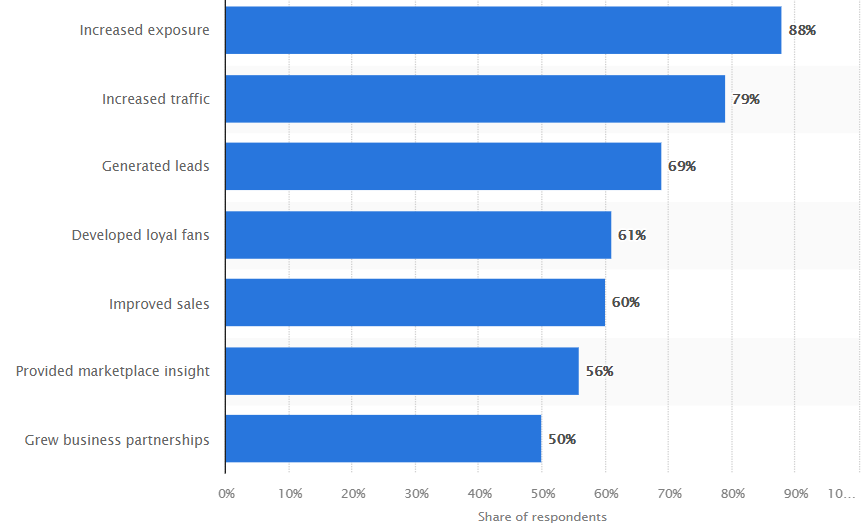
These numbers come from a poll that united 4,394 marketers worldwide, and it shows how versatile social media marketing can be.
First of all, it brings more exposure to your brand in general. Then, if your goal is to generate more traffic, being active on social media can contribute to that. Finally, you can involve social media activities in lead generation. For instance, you can create a lead magnet, advertise it on Facebook or Instagram, attract potential customers, and improve sales in no time.
Which activities does social media marketing usually involve?
The following skills are crucial for an outstanding social media marketing strategy:
- Graphic design
- Copywriting
- Video creation and editing
- Data monitoring
- Brand monitoring
- Advertising
You can involve inbound marketing tools to cover some of these activities for you. Most of them are not very costly, but you still need to know how to read the data to understand where your strategy might be underperforming.
The 8 Most Common Social Media Management Cost Factors
If we compare social media and traditional marketing, the first strategy is not as expensive. However, there are still a few crucial factors that can drastically change the cost of social media marketing. Let’s take a closer look at each of them.
Factor #1: Number of networks
The more social networks you use for your business, the higher the price for social media marketing will be.
Let’s say you have an active LinkedIn account and now you want to conquer Facebook as well. If you have an in-house social media marketer, they can cover this task. However, social media marketing services will charge extra for an additional social media profile.
Why?
An agency will most likely bring in a new person to do the Facebook promotions for you. They will hold all the responsibilities regarding content creation, page monitoring, etc. Hence, extra costs.
How much will you have to pay?
If we’re talking about an agency, be ready to splurge – the average price for social media management is between $300 and $1000. Some agencies with years of experience and a big clientele can charge even more.
If you have an in-house marketing expert who has access to marketing automation tools, you might just need to upgrade your current subscription plan. For instance, managing five social media accounts on Sprout Social costs $89 per month. If you need to connect more profiles, a more extensive plan costs $149 a month.
Factor #2: Number of posts and custom images
Let’s say the agency has been making eight posts on social media a month. Such consistency has brought positive results, and now you want to increase the number of posts to get even more engagement.
Will you have to pay extra?
Of course, the costs will depend on the number of posts and the type of content you’d prefer to see. Let’s take a look at a real-life example to prove our point. Lyfe Marketing agency charges $700 for 12 posts per month for Facebook and Instagram. 20 posts a month will cost $800, and 40 posts – $1100 a month:
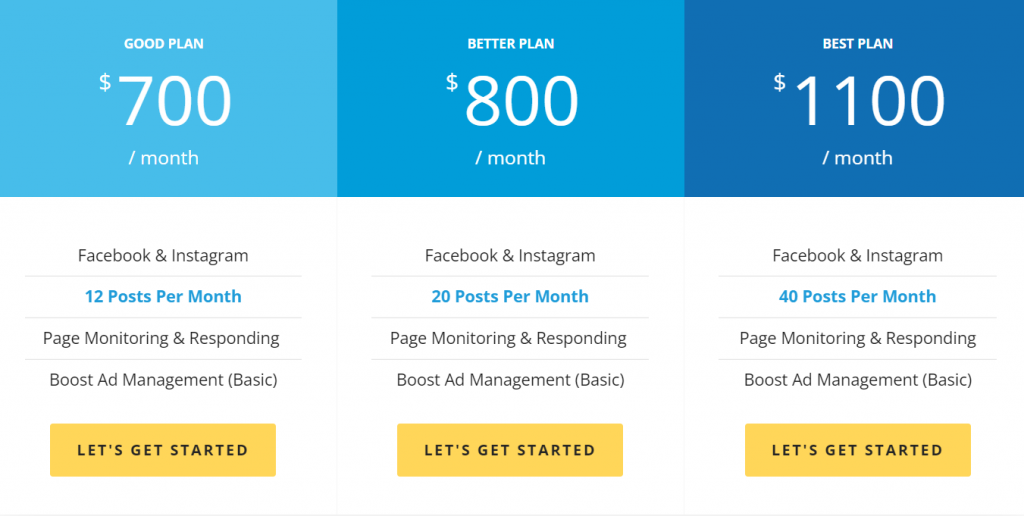
These are the average prices. If you outsource this task to a freelancer, the costs might be even lower, but again, everything depends on their experience and rate per hour of work.
If you have a social media manager on your team, you won’t have to worry about this issue. Even if they are using social media automation tools, such platforms don’t usually limit the number of posts a month.
Factor #3: Number of contests
Well, for one, sweepstakes deliver more conversions than any other content type – 34% more conversions, to be precise. Also, people love free stuff and will gladly share their contact information if it brings them closer to winning something valuable.
A contest is also an effective social media marketing strategy for you to partner with another brand and get access to wider audiences. NYX Cosmetics is doing it regularly with other influencers. The latest giveaway took place one week before Halloween:

How much will it cost you to run a giveaway like this?
Agencies typically consider social media contests as marketing campaigns, and the prices for one campaign fluctuate between $4,000 and $7,000, depending on the scale of the event.
If you decide to do in-house campaign management, the costs will depend on the giveaway rules. For example, if you want every participant to enroll via a specific landing page, you need a developer to build it, which costs $150 on average. In addition to that, you will need a designer, who will charge between $40 and $200 for the project.
It is also possible to use contest management tools if you don’t want to do everything from scratch. Solutions like Woorise, Wishpond, Buffer, and Outgrow have all the tools required to run a contest and cost between $20 to $600 a month.
Sounds too expensive?
It can be for some business owners. However, as we discussed earlier, contests and giveaways have great conversion rates, so expect positive ROI from running such campaigns.
Factor #4: Number of promoted posts
If one of your posts has good performance, you can use it to drive even more engagement by promoting it. For example, Facebook has such an option for almost every post type:
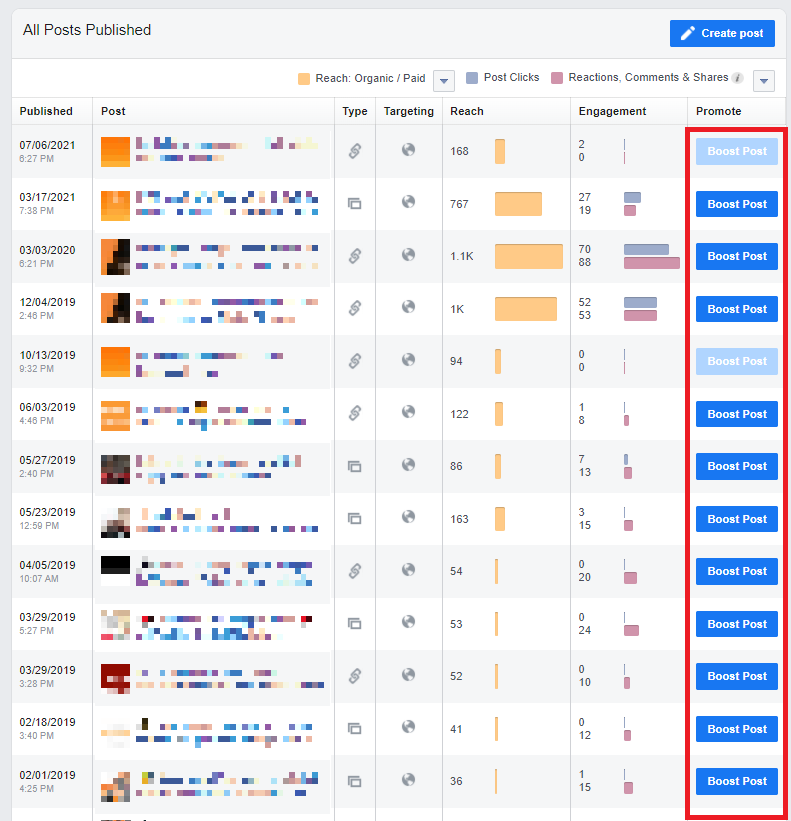
It is also possible to promote your entire social media account. Your boosted post will display as an ad, and you can use it to target a specific audience.
If you’re already working with a social media management agency and want to do post boosts regularly, you will have to pay extra for social media advertising services. The cost will depend on the monthly ad spend.
For instance, here are the prices for such services from Lyfe Marketing:
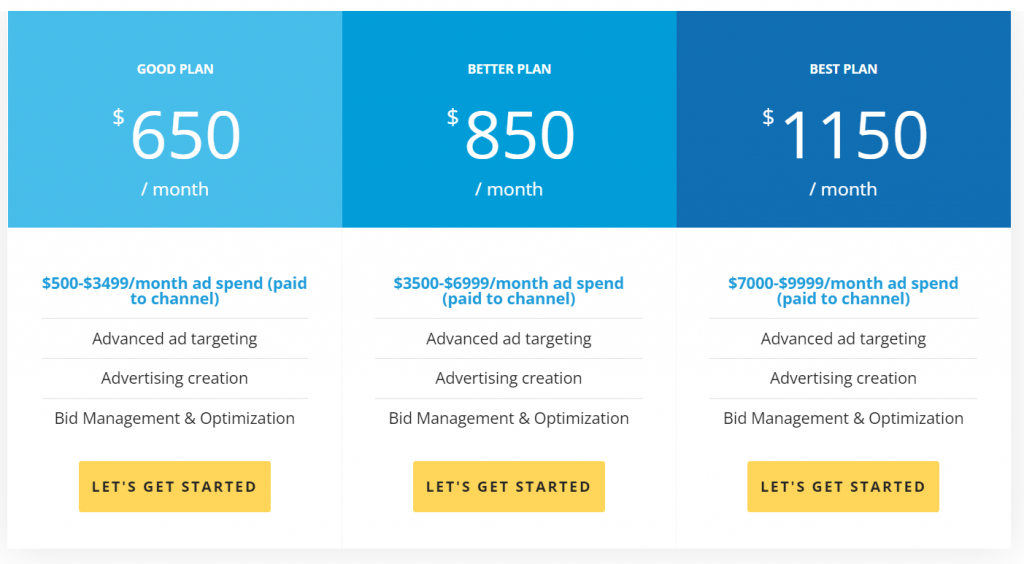
Note: if you want to boost posts on several social media channels, the agency will charge you for each platform separately.
Of course, you don’t have to outsource this task to an agency. However, an agency covers all the activities related to ads and boosted posts, from content creation to analytics and data monitoring. It’s more convenient than trying to do it by yourself, especially if you have no experience.
Factor #5: Social media content and activity audit
Social media audit is a strategy to evaluate your current social media marketing efforts to uncover possible growth opportunities to improve performance.
Social media audit includes the following activities:
- Collecting the information on each of your social media accounts
- Checking the relevancy for each of the accounts
- Analyzing the performance of your posts
- Crawling the metrics
- Generating the report
You can conduct a social media audit in under 30 minutes for a single social media profile if you have experience. Otherwise, it might take an entire day or even more to collect all information.
Social media audits precede social media campaigns. So, if you’re planning to hire an agency, they will insist on running the audit first before creating a strategy. Agencies typically charge from $300 to $5,000 for an audit. The price depends on your industry and the number of accounts being audited.
Factor #6: Competitor analysis
Social media marketing is extremely competitive. Only in the U.S., 71% of businesses use Instagram alone to drive traffic and engagement. That’s why you can’t proceed with social media marketing if you don’t know what your competitors are up to.
Competitor analysis provides you with valuable insights into your rival’s social media activity. It helps you assess their strengths and weaknesses, giving you ideas on advancing your social media presence.
Becoming well-informed about your competitors has the following advantages:
- Defining a unique selling proposition
- Enhancing a product or service
- Improved branding
- Identifying gaps in digital marketing strategy
- Better risk management
Unfortunately, not all businesses see the value of doing competitor research before launching a social media marketing strategy. However, it can tip the scales in your favor and help create a social presence that will outshine your rivals.
How much does competitor analysis cost?
Many agencies already include this task in the social media marketing package. If you want to order it separately, the prices can go over $1,000, depending on the industry and niche. For instance, competitor analysis in the beauty and self-care niche will cost more because this market is very saturated.
Factor #7: Social media strategy
Outsourcing social media doesn’t mean that the agency will have to do all the activities. Sometimes, all you need from them is creating and managing content, while data management and other tasks can remain at your team’s disposal.
However, a more efficient approach is to hire social media experts from the beginning. They will create your content strategy from scratch and manage your performance across different social networks.
A social media strategist will do the following:
- Perform competitor analysis
- Outline a content plan and create a content calendar
- Work on social media posts
- Track brand mentions
- Run social media ads and promote posts
- Track and analyze social data
So, how much will a social media marketing agency charge you for all these activities?
Here’s an example of prices from WebFX:
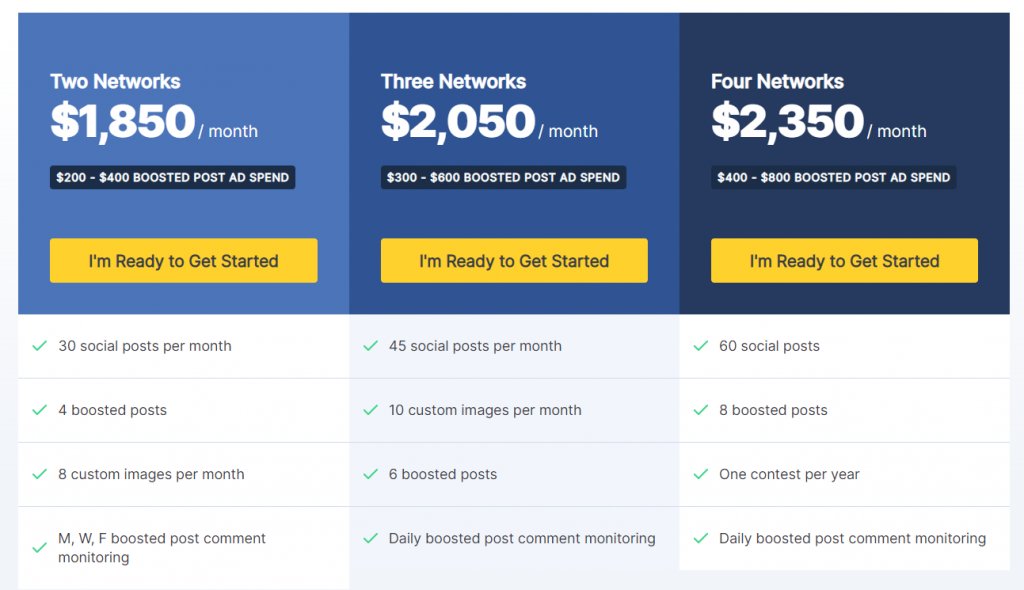
Thus, to know precisely how much your strategy will cost, you need to decide on the following factors:
- Number of posts per month
- Number of boosted posts and ads per month
- Custom content (visuals, videos)
- Brand reputation analysis
- Daily monitoring of social assets
- Monthly reporting and analysis
- Number of contests a year
Understanding your social media strategy needs will help define the best price for the agency services and save you some money.
Factor #8: Social media optimization
What if you already have a social strategy, but it doesn’t deliver the results you expect?
Then, the best option for you is to do social media optimization. In this case, if you decide to outsource this task to an agency, they will do the following:
- Analyze all social media data within a given time period
- Do competitor research
- Identify your target audience’s key interests and pain points
- See how your content strategy aligns with your audience’s needs
- Go through your branding activities
In the end, you will receive an updated strategy with a growth plan. Next, you can execute all the changes yourself or have the agency do it for you. If you choose the latter, it can cost you up to $600 a month (at least these are the prices from Peak Marketers):

Social media optimization is not a one-time event – it can take an agency several months to make your social media activity bring the expected results.
Social Media Management: Company vs. Freelancer vs. In-house Employee
In the previous section, we’ve briefly mentioned that it is possible to hire an agency or a freelancer to run your social media accounts. You can also choose to hire an in-house employee to do all that for you.
But which option is the best in terms of cost and efficiency?
We could write an extensive essay on the pros and cons, but to save you (and us) precious time, we’ve prepared a comparative table:
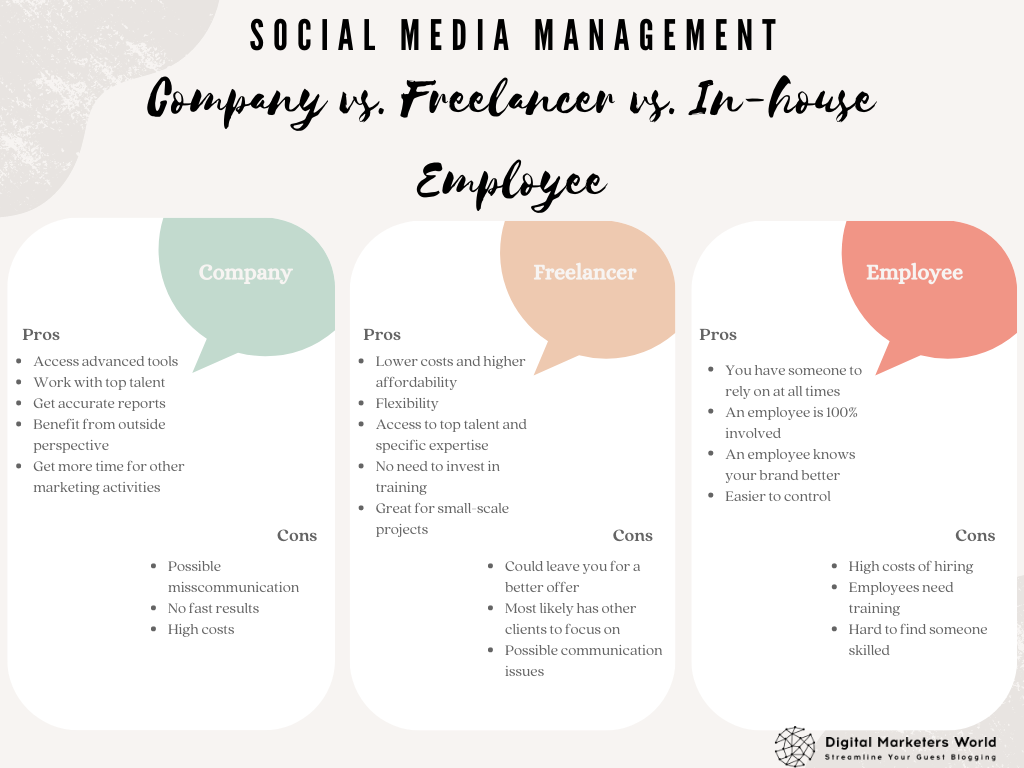
So, based on this graph, what is the best option for hiring a social media marketer?
- If you need an effective content marketing strategy from the start, hire an agency.
- If you have a small budget, hire a freelancer.
- If specific branding is required, an in-house employee is your best bet.
- If you don’t have social media experience, go for an agency
- If you only want to maintain a social media presence, a freelance social media manager is enough.
- If your social media strategy is underperforming, hire an agency.
- Get an in-house social media professional if marketing is your primary focus.
- A small-scale project is the best task for a freelancer.
Hopefully, these points have cleared things up for you a bit.
Social Media Advertising Costs on Different Platforms
Social media ads lead the ranking of the most in-demand paid methods of content distribution. According to Statista, 83% of B2B marketers in North America chose this activity:
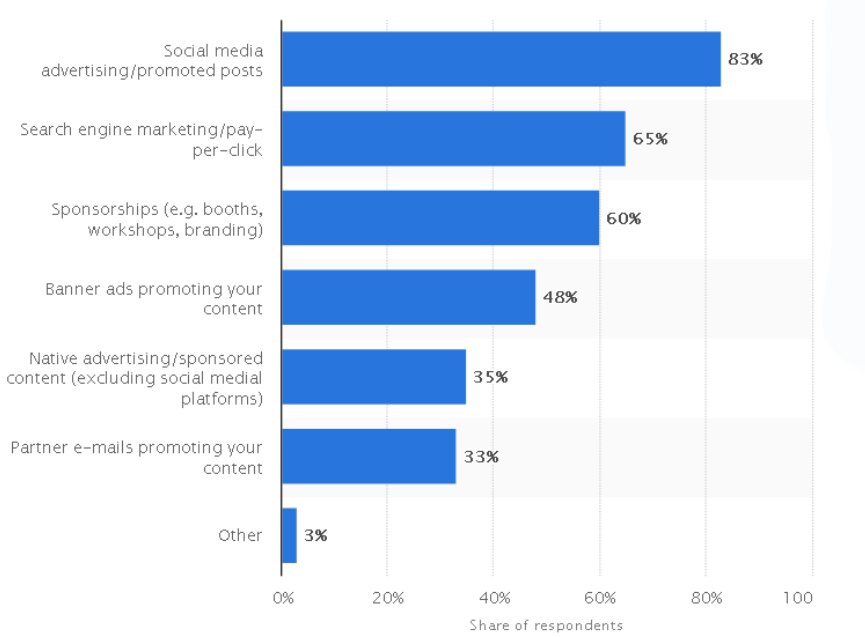
All social media platforms allow you to run ads if you have a business account. You can choose the keyword to target, define your audience, and set the location where your ad will appear.
That said, each network also has its own pricing policy and factors that determine ad costs. Let’s take a look at the data for the most popular advertising platforms – Facebook, Instagram, TikTok, and YouTube.
Advertising costs on Facebook
Facebook is one of the most popular platforms among advertisers. No wonder – it has 2.9 billion monthly active users, so you can imagine how many growth opportunities await you if you decide to place ads there.
The following five factors impact the cost of a Facebook ad:
- The size of your bid
- Your target audience
- Ad quality and relevance score (positive and negative feedback an ad receives from its target audience)
- Estimated action rates (whether a person engages or converts from an ad)
- The ad placement option
According to the recent WordStream research, your industry is also critical in determining the ad price. And, based on their data, we can derive the following average advertising costs across all industries:
- Average cost per action (CPA) – $18.68
- Average cost per click (CPC) – $1.72
- Average cost per thousand impressions (CPM) – $7.19
The best part about running ads on Facebook is that you can bid as much as you can afford, and the platform will try to deliver the best results within your budget. In Facebook Ads Manager, you can bid as low as $1, run a social media advertising campaign for only $7 for seven days, and still reach 2.6K people a day:
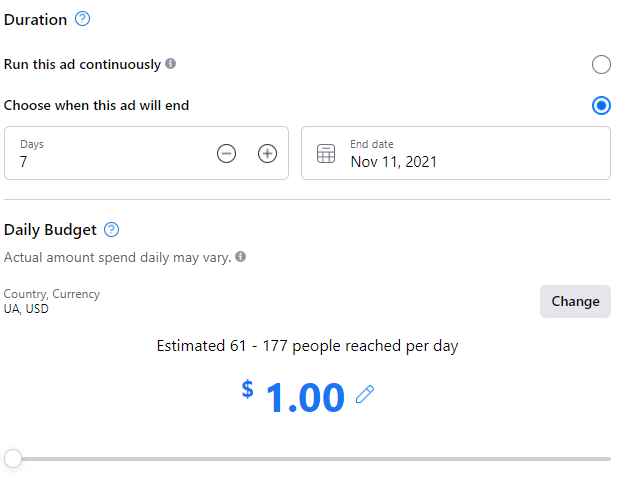
Remember – these are just estimates. The final cost will depend on the factors we’ve outlined above.
Advertising costs on Instagram
Similar to Facebook, the cost of your Instagram advertising campaign is up to you. You can set the lowest budget possible and still run an ad and get more exposure.
Before you consider Instagram advertising, take the following factors into account:
- The size of your bid
- Relevance score
- Ad quality
- Estimated action rates
- Competition
- The demographics of your target audience
- Ad placement
You can also use your Facebook ad and promote it on Instagram (since they are both parts of the network called Meta now):
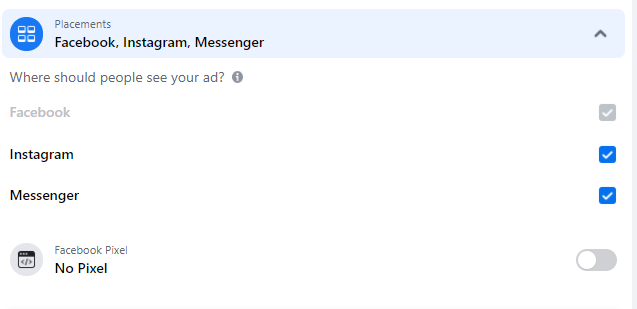
Ad placement options include Instagram Feed, Instagram Explore, and Instagram Stories.
So, how much will an Instagram ad cost you?
A different study by WordStream revealed the following average prices for ads on this platform:
- Average cost per engagement (CPE) – $0.01 – $0.05
- Average cost per click (CPC/PPC) – $0.40 – $0.70
- Average cost per thousand impressions (CPM) – $2.50 – $3.50
According to this research, Facebook is considered a bit cheaper than Instagram. However, in terms of deliverability, Instagram can bring better results, especially if you’re targeting younger audiences. So, we highly recommend exploring Instagram advertising at least with a minimal trial budget.
Advertising costs on TikTok
TikTok is a baby compared to giants like Instagram and Facebook. Yet it is one of the most popular social media networks right now – it has 1 billion active monthly users.
TikTok ads appear as you scroll your Feed. They may also pop up right when you open the app. Sometimes, it’s a bit hard to differentiate an ad from other content – the network took an effort to nativize ads as much as possible.
If you’d like to tap into TikTok advertising, you need to consider the following price-forming factors:
- The goals of your ad campaign
- The size of your bid
- The bidding method
- Your target audience
- Ad format
TikTok is the best social media platform to drive engagement. That said, it’s also the reason why ads on this platform are considerably more expensive than on Facebook or Instagram. Take a look at the results from the Voluum study:

Shocking, huh? It’s also worth mentioning that the minimum investment for a CPM-focused ad is $500. So, you’ll definitely have to splurge on TikTok advertising.
We would not recommend starting your ad campaign with this platform. Instead, try cheaper options first just to see how well social media advertising works for your business. TikTok is also not the best fit for some industries.
Advertising costs on YouTube
Love them or hate them, YouTube ads deliver the most results out of all social media platforms. According to official statistics, paid YouTube ads are 84% more likely to receive viewers’ attention.
YouTube advertising campaign costs depend on the following factors:
- Audience targeting
- Watch time
- Campaign objective
- Length of the video
- Budget
Since it is a Google company now, it makes sense to check out the Google Ads benchmarks. According to Wordstream research, these are the following average prices for YouTube ads:
- Cost per view (CPV) – $0.010 – $0.030
- Cost for reaching 100k viewers – $2,000
Ultimately, the final price will depend on your industry, the size of your target audience, and your campaign’s objectives.
How to Make the Most Of Your Social Media Budget: 4 Tips
Social media marketing is a very ambiguous strategy budget-wise. On the one hand, you can run your accounts almost for free, pouring minimal budgets into ads from time to time.
On the other hand, if you want more exposure and engagement, be ready to invest more in your social media presence. A simple image post on Instagram won’t do much, especially if your industry is super competitive.
However, we understand that most small businesses and startups don’t have big budgets. And although we still recommend making social media marketing an ongoing investment, we would like to share a few tips that will help you control your expenses.
Let’s jump in.
Tip #1: Do market research
Market research is a set of methodologies and tactics to collect information about the target market and consumers to understand their needs and maintain competitiveness.
Social media marketing, like any other marketing strategy, involves market research. Before you start developing a solid social media presence, you need to understand who you are targeting and what your audience expects.
So, before tapping into the world of social media, make sure you do market research, which involves the following steps:
- Define the opportunity. Figure out the perks social media presence can bring to your brand and business goals it will solve.
- Prepare a draft of your marketing plan. Outline the activities you think will help you achieve your goals.
- Collect the data. Analyze customer behaviors, do competitor research, and run surveys to justify your social media growth tactics.
When you have the necessary information at hand, you can tweak your strategy and avoid trial-and-error mistakes, which can cost a pretty penny.
Tip #2: Analyze the performance of your content
In most cases, a successful content marketing strategy for social media cannot be built right away. Even if you have the most precise target audience profile and know what your followers expect, your content strategy will require changes from time to time.
Why?
Your relationship with your followers will evolve over time. And it’s a great thing – as you get to know one another more, you will be able to target their needs and choose appropriate content better.
However, there’s one thing that’s an absolute must here – you need to track the data on how your followers interact with your content. Luckily, you can do it for free through the built-in analytics tools. For instance, on Facebook, you can single out the best-performing posts by analyzing reach and engagement:
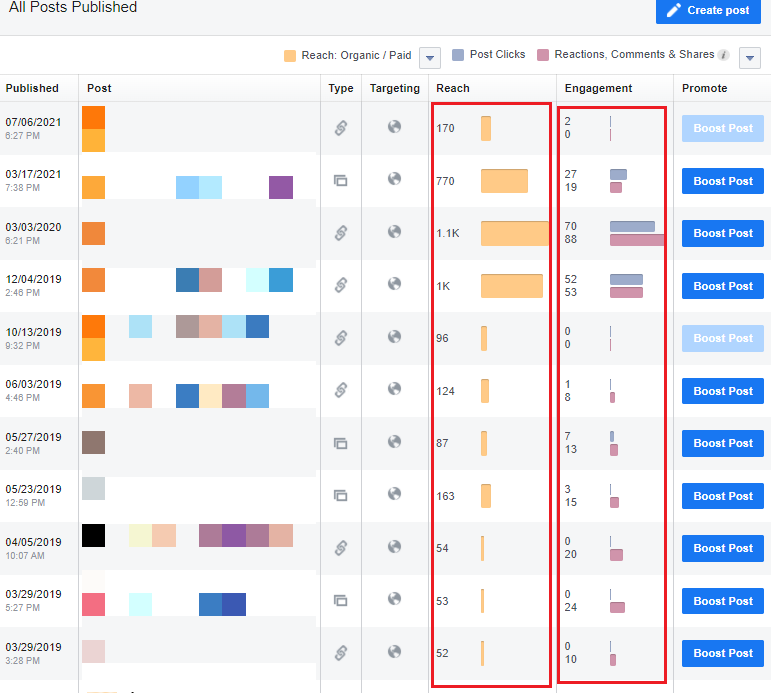
Make sure to track this data continuously. It will help you identify content types that bring the most engagement, saving you money along the way.
Tip #3: Check your audience’s activity times
Imagine what a disappointment it will be if you create custom visual content for your social media, and no one will see it. It’s literally money down the drain.
Most brands have very diverse audiences. Just take a look at the example of our Facebook profile – our followers come from various countries and speak different languages:
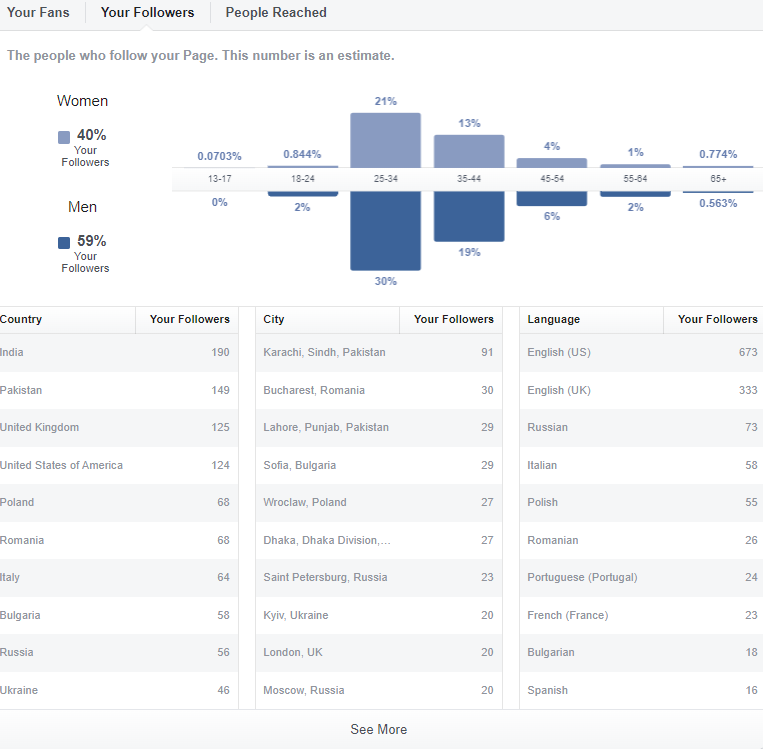
Such diversity is great but also makes it hard to have as many followers as possible check out your recent post. And that’s where audience activity data comes into play.
You can track audience activity via built-in analytics tools. For instance, on Facebook, this data comes in the form of a graph, which is very convenient:
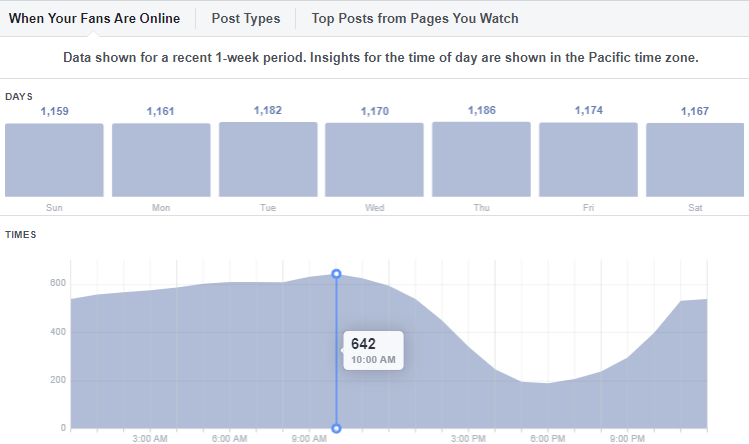
As you can see, most of our followers are active at 10 AM, but their activity starts increasing earlier. Thus, the best time for us to make a post is between 5 AM and 10.30 AM.
Keeping track of these times will help ensure that the money you spend on content does not go to waste.
Tip #4: Do regular social media audits
Last but not least, social media audits can help you control your social media budget. An audit implies data and brand monitoring across all social media platforms, helping you prevent the following issues:
- Poor content performance
- Broken links (e.g., if you’re running an e-commerce store and have link posts on social media)
- Scheduling inconsistency
- Content gap
- Bad conversion rates
- Decreasing follower base
All these problems can cost you a lot of money if you don’t address them in a timely manner. Doing a social media audit on a quarterly basis can help you run social media smoothly and make sure you remain competitive.
Now Over to You
So, what’s the final answer – is social media marketing expensive?
No, and it doesn’t have to be if you follow through with the following tips:
- Run market research
- Track your content
- Know when your audience is active
- Run regular social media audits
It is also important to be familiar with the factors impacting your social media budget:
- Number of networks
- Number of posts
- Number of contests
- Number of promoted posts
Some marketing companies can also charge extra for social media audits, competitor analysis, social media optimization, and creating a branded strategy from scratch. But all of these factors don’t matter if you have no idea which goals you want to achieve with your social media presence.
So, if you want a stellar social media performance, determine your objectives first. And, of course, read our blog to learn more about digital marketing.

Mariia is a content strategist and editor at Digital Marketer’s World. She is passionate about educating others on all things marketing and believes in the power of the written word.
